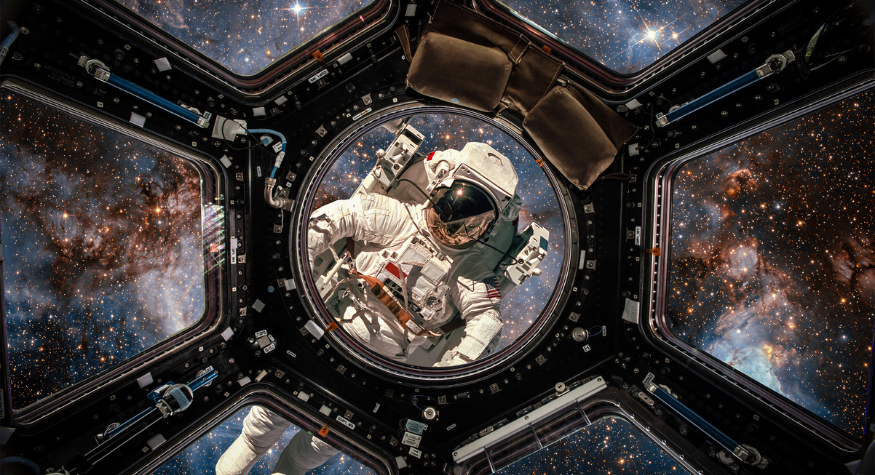Written by MJ Hurley
Students across the U.S. dream of working for NASA one day, but for students in Wheeling High School’s advanced engineering program, that dream is now a reality.
Since April, Wheeling students have been building brackets and handles that will soon be launched to the International Space Station.
The aluminum alloy and stainless steel hardware — some of which feature design specifications that are the size of a human hair — will help ISS astronauts move around in zero gravity.
“It’s humbling knowing that Wheeling High School will have a permanent piece of history in space,” said Tom Steinbach, a Wheeling engineering and machining instructor. “The parts, as small as they may be, are still vital in the space station and it will be a memory of a lifetime.”
The project is part of a unique partnership with the SME Education Foundation and High School Students United With NASA to Create Hardware (HUNCH) that demonstrates the strength of Wheeling’s engineering and manufacturing program.
Wheeling is one of 15 high schools across the country — and the only school in the state of Illinois — participating in the NASA project.
In order for the intricate parts to work inside the ISS, they must be manufactured efficiently, which creates a competitive environment for students, Steinbach said.
These students are a part of Project Lead The Way, which is a series of engineering courses offered at Wheeling that are designed to challenge students with rigorous, hands-on, 21st century skills. These classes lead students throughout various career pathways and ignite passions and interest within the engineering and manufacturing fields.
This project also gives students an opportunity to solve critical thinking problems and difficulties in the classroom, the workforce and day-to-day life.
“These kinds of collaborations with industry partners ensure our curriculum is in line with industry standards and trends,” said Dan Weidner, the director of academic programs and pathways at High School District 214.
“We want to build the next generation of manufacturers now and give them the skills to be employable as soon as they graduate.”
For Wheeling engineering and manufacturing students, the project is a hands-on, real-life challenge that will help them as they pursue careers in the STEM field.
“The PLTW Engineering classes I have taken at Wheeling High School will definitely help me with going into a career and college,” said Erica Herin, a Wheeling senior.
“I feel I will have more of an advantage with the machines and technology than most students thanks to my classes and my teachers. With their support and the supplies in front of me, I feel I have a huge advantage over other schools and students.”
Recent Wheeling graduate Victor Fuentes said he was ecstatic when he learned last spring that he and his classmates would help build parts for NASA.
“At first I thought Mr. Steinbach was joking,” he said. “I couldn’t believe that we were actually designing and manufacturing parts for NASA. I was jumping out of my seat knowing that I would be designing something for NASA and it would actually be used on the ISS.”
Steinbach said he hopes the project will encourage more Wheeling students to consider a career in manufacturing or engineering.
He believes there is a misconception that engineering is solely for students who are strong in math and science. At Wheeling, staff work to include students with all kinds of skill sets in the engineering and manufacturing courses.
“We as a community are looking for students who are critical, out-of-the-box thinkers,” said Steinbach. “If you are the type of person who wonders how things work or how things are made, you would excel in our area.”

